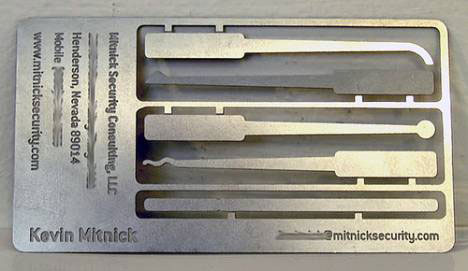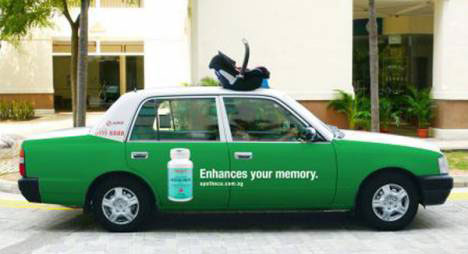Welcome to part seven of our eight-part Guide to Guerrilla Marketing. From previous articles in this series you know a great deal already about guerrilla marketing. You know its history and goals, you know the basic principles and how it has turned around the outlook for some historic businesses. If you’ve been with this series from the start you have probably wondered at least once how you might be able to put guerrilla marketing to use in your own life.
Even if you don’t own a business or work for a nonprofit agency, you can use the principles popularized by J.C. Levinson to land a job, get a date, or promote your wicked skills in your area of expertise.
“But how can I, a lowly web designer/freelancer/single person use the awesome power of the guerrilla to market my experience/skills/self? Do I even have what it takes to play the guerrilla game?”

First, consider some of the basic rules of guerrilla marketing:
1. Use ingenuity instead of big money.
2. Dedicate plenty of time to your gmarketing effort – it won’t come together instantly.
3. Follow through; don’t hype up an inferior or non-existent product.
4. Make it personal. Appeal to your target audience’s vanity or pride.
5. Creating a recognizable and memorable brand will do wonders for any campaign, large or small.

To put this into context: say you are part of a small consulting firm with a tiny advertising budget. You know you’re good, and your team has buckets of experience between them all. But for the life of you, you just can’t seem to stand out among all of the other firms out there. How do you get attention from prospective clients without wearing a big flashing-neon hat?
You gather information on prospective clients, and you use that information to create a pitch that is tailored to each client. Tell them why they need you, and go into specifics. If the prospective client mentions a passion for Mexican food, have an order of nachos delivered to their office from their favorite Mexican restaurant. Under the lid, include a picture of your team wearing sombreros and big smiles along with their business suits. Whatever gets your foot in the door and gets your name remembered.
Timing plays a large part in your success. Find out when there’s a big convention in town and frequent the area it’s being held in. Leave business cards, bumper stickers, and promotional giveaways all over that place. Hang a banner over the entryway that says “[This Company] Welcomes You to [This Convention].” Put your logo-emblazoned golf balls in the carts at the closest golf course.
What about those of us hitting the job market? How does guerrilla marketing apply to that situation? Most of the time, it’s just about getting your name remembered.
When you send out a resumé, do you simply print out the same one that’s been following you around since college and indiscriminately mail it to companies? Chances are you spruce it up, update the format, and target the companies you send it out to. A guerrilla takes it one step further.
Instead of printing out a slightly revamped resumé, the guerrilla redesigns theirs. They tailor the document to the position they’re applying for. They try to get a contact inside the company they’re targeting and find out what qualities the human resources department admires most. They send thank-you cards after interviews and remember to congratulate the interviewer on their new grandchild.
Sneaky? Maybe. But no more than the tactics that have been used for decades whenever the demand for jobs outweighed the available positions.
The question remains: is guerrilla marketing right for you?
If you aren’t prepared to put some work into it, then guerrilla marketing is definitely not for you. This level of research, pitching, and pavement-pounding requires no small measure of dedication.
It’s also important to note that your career phase plays an important role in your gmarketing campaign. If you’re a fresh new firm with no history and no proven results to back up your claims,guerrilla marketing can be successful, but should be used with caution. Be prepared to back up each and every claim – if you don’t, you’ll quickly earn the reputation of a flashy amateur.
When is guerrilla marketing not a good fit? When you’re not able to back up your claims, for one. If you are discovered to be all sizzle and no steak, word will get around very quickly. If you’re expecting immediate and overwhelming results, guerrilla marketing will let you down. It’s about getting a bigger return for your advertising dollar, not about being buried in responses.
Whether you’re a huge multi-national corporation or a little mom and pop business – or even a solitary job hunter – guerrilla marketing can absolutely change the results of your advertising efforts. Use it wisely, though, since a flop of a guerrilla marketing campaign might get you remembered for all the wrong reasons.
Come back for the eighth and final installment in our guerrilla marketing series to find out what lies ahead for this renegade advertising technique.
See More of Our 8-Part Guerrilla Marketing Series:
Guerrilla Marketing 1: History of Guerrilla Marketing
Guerrilla Marketing 2: Origins and Evolution of Guerrilla Marketing
Guerrilla Marketing 3: Major Corporations Go for Guerrilla Marketing
Guerrilla Marketing 4: Guerrilla Marketing versus Viral Marketing
Guerrilla Marketing 5: Guerrilla Marketing for Good Causes
Guerrilla Marketing 6: 10 Types of Guerrilla Marketing
Guerrilla Marketing 7: Is Guerrilla Marketing Right for You?
Guerrilla Marketing 8: The Future of Guerrilla Marketing




